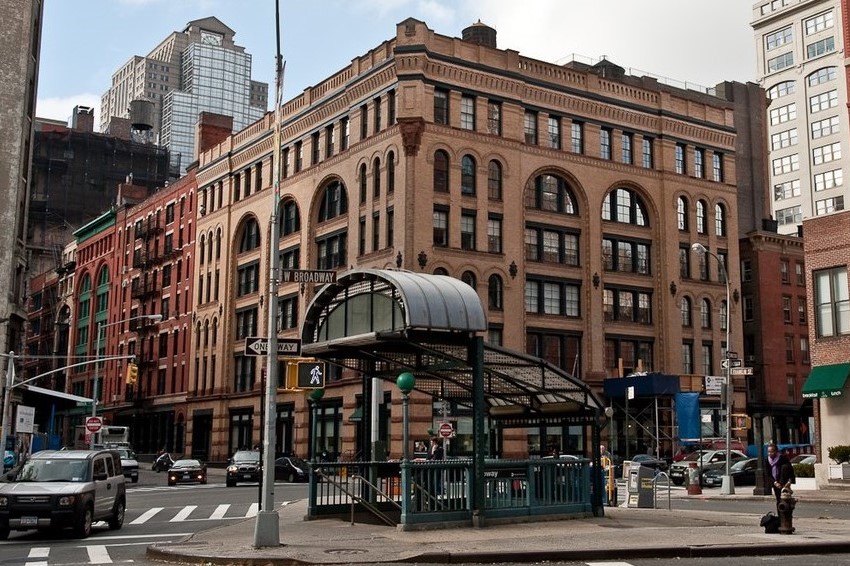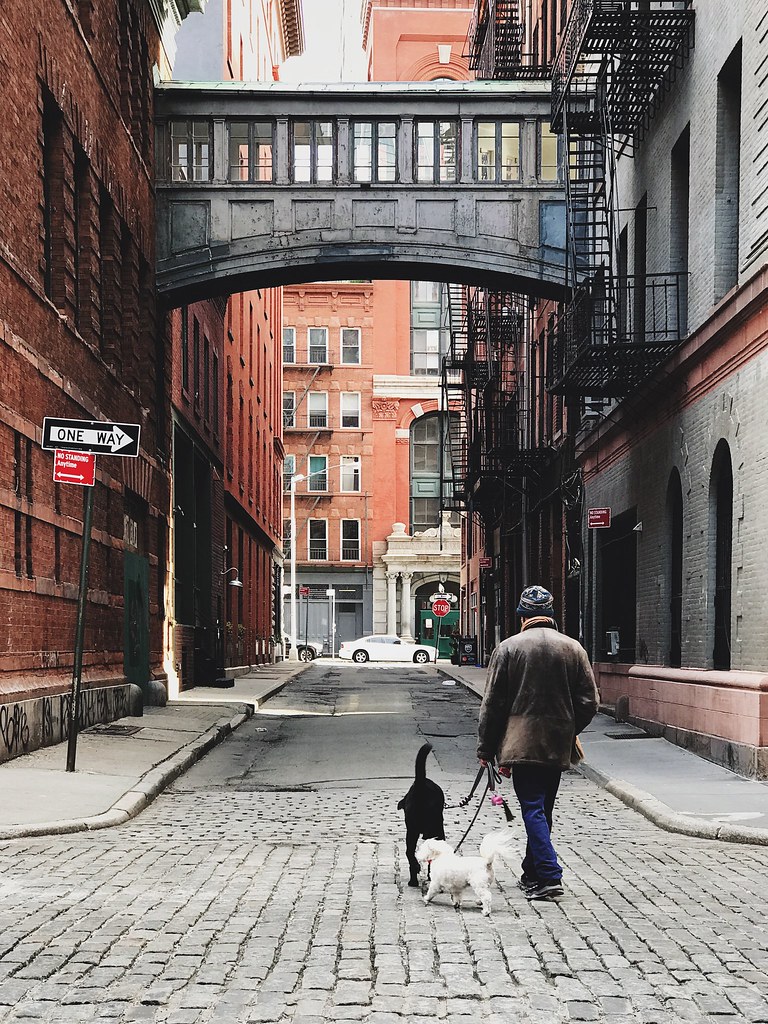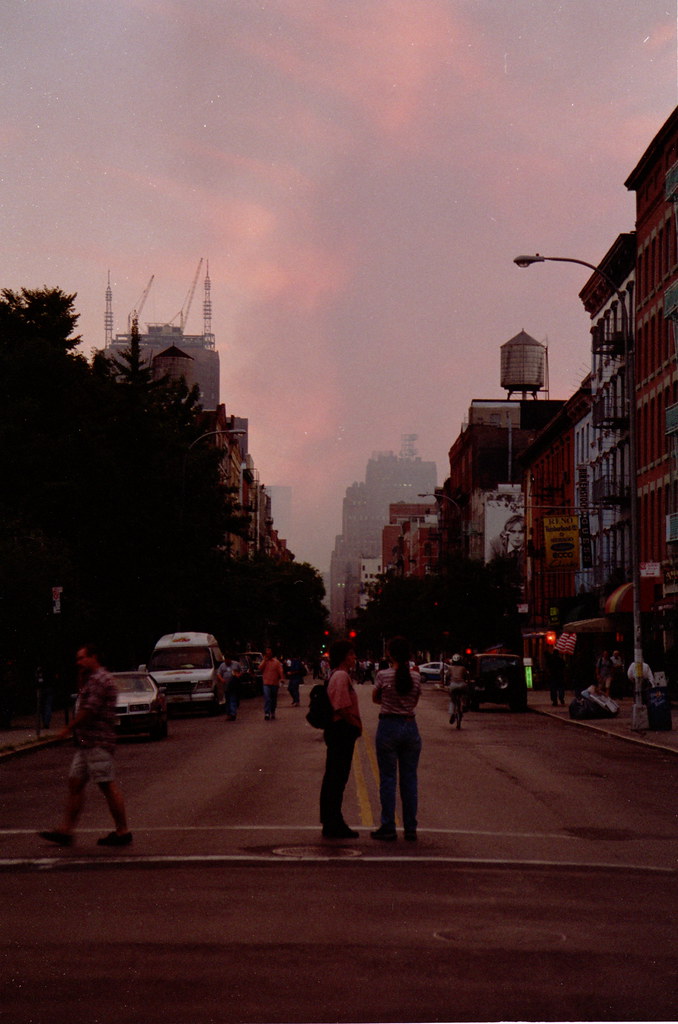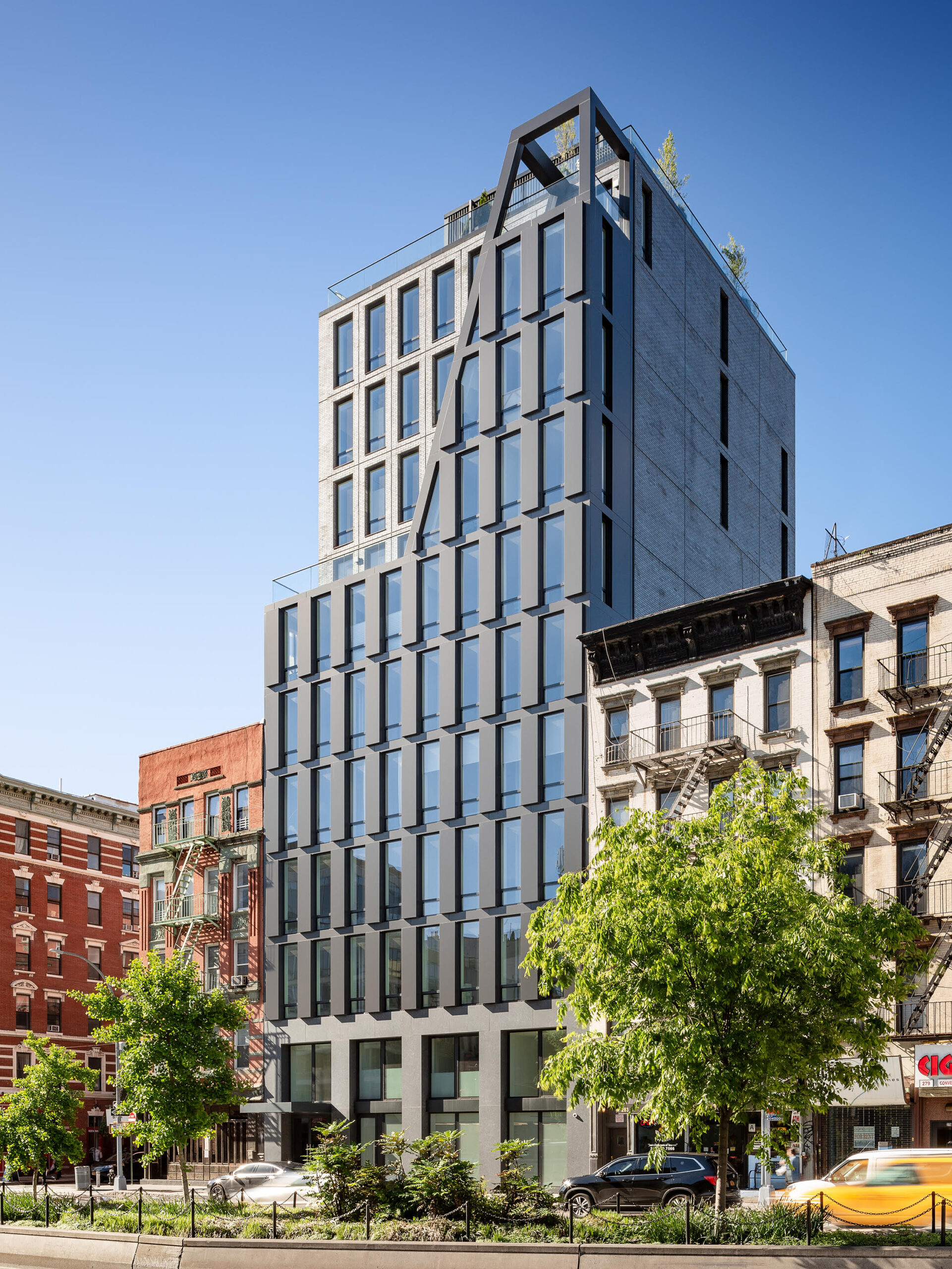When I met Aldo Andreoli in 1994, my career in Real Estate was pre-pubescent. I didn’t have as much as a single exclusive listing. I was literally dragged to meet him and his partner/wife in order to pitch a highly sought-after listing in an area of downtown Manhattan, recently named Tribeca.

The broker who encouraged me to join him felt that two novices were better than one. Turned out, he was correct. After schmoozing about my former life as a fine art consultant and his as a journalist, we seemed as likely a combo as many others. The idea that these cutting-edge designed lofts would appeal to a bi-coastal music execs/rock musicians or others in the ‘industry’ led me to suggest placing ads in the Hollywood Reporter, Variety, and other publications that would attract these types of buyers. To our amazement we procured the listing! The 5 highly designed lofts in a former (unremarkable) building on Thomas Street had recently been designed and converted by Aldo to full floor loft units. They included features like lighting alcoves, Italian ceramic glass tiles, and a host of other amenities that had at the time not been seen before. They flew off the market in record-breaking time and at unprecedented prices. To give an example, the ground floor unit, with no windows, only the lighting alcoves that created an illusion of light and a gigantic skylight on the back extension roof, sold for 500K. Keep in mind that this was 1995, when people were asking how Tribeca was spelled. The penthouse at approximately 2,200 square feet with outdoor space, sold for $1.2 million, setting a record at the time for the highest price per square foot in Tribeca.
Since this journey in Real Estate began for Aldo (and me), his career has soared; he continues to work on projects not only in downtown Manhattan, but in Mexico, Sedona (Arizona), California, Washington DC, and now, after what seems a full circle, he is settling in the Hudson Valley to continue his passion and creativity designing modular homes straight out of “Architectural Digest”.
Although we’ve been sporadically in touch over the years, I recently had the pleasure of reconnecting with him in upstate New York and was curious to learn more about the silent span between 1995 and now.
I discovered that, after Thomas Street, he had tried to develop a very cutting-edge design building on the Upper West side, but the neighbors had stopped him. Adding a modern structure on top of a historic building is not unusual by today’s standards– presuming it’s done with good design sense—but at that time, it was politically incorrect.

I remembered that twenty years ago he was the designer/developer of 140 Franklin Street, a historic building in the heart of Tribeca, and today still considered one of the most important Tribeca addresses. In the Lobby, the walls were painted with a mural by the late Sol Lewitt. And I seem to recall that we lost touch after 9/11 when he relocated to Sedona, Arizona, where he built houses and developed raw land in the High desert.

He came back to New York in 2010, where he designed Spring Studios, a Tribeca innovative 360 agency creating communications for fashion, beauty, lifestyle and luxury brands. Spring Studios now hosts, among other things, New York Fashion week, Tribeca Film Festival and CNN Citizen Conference. Images of the Spring Studios main staircase, designed by Aldo and built in Italy, has been published everywhere and it is now considered an iconic symbol of this building.
We also discussed his design projects for 250 Bowery, 290 West Street and 11 N. Moore, three condo buildings featured in the Bravo program “Million Dollar Listing”, and homes of many celebrities.
I was unaware of his design development consisting of 22 townhouses in Red Hook, Brooklyn at a time when Brooklyn was on the cutting edge; as well as the most iconic condo in the Lower East Side: 287 East Houston.
Now Aldo has relocated upstate. He is currently working on the design of a new development in Costa Careyes, Mexico, a creative resort founded by Gianfranco Brignone, also originally from Torino. Aldo is also immersed in the design and planning of a high-end modular home complex (location still under consideration) working with a few internationally renowned artists.
In our interview, I asked for his perspective on these important designs and life decisions, and also about the state of architecture and design today.
How did your early life in Torino inspire your work as an architect?
“Torino is a small Paris. It is one of the most beautiful cities in Europe. Torino invented movies, cars, fashion, television. A very creative city. I was born there by coincidence, because my father, originally from Genoa, was a journalist and was hired by La Stampa, a Torino-based Italian newspaper owned by the Agnelli family. My first cousin from my mother’s side, was a beautiful and famous actress in the sixties: Rosanna Schiaffino. Everybody pushed me to seek a creative career, but in reality, I wanted to become a racing car driver and I did, even if it didn’t last very long: too many accidents. So I took on Architecture, almost as a second choice.”
Who were your earliest role models and how do you feel your work is informed by their design?
“I was very fascinated by Ettore Sottsass, the founder of the “Memphis group” as he was an undiscussed charismatic figure in Italy’s design world. He never achieved the status of, let’s say Aldo Rossi (a Pritzker prize winner), but his approach to architecture was strongly driven by art and creativity. Around him there was a group of young architects fascinated by his radical approach and freedom of thinking. Among this group there were a few architects that now are very famous, such as Aldo Cibic, Matteo Thun and Michele De Lucchi. Later on, when I was already living in America, I ended up working with him on the design of a house in Maui, Hawaii.”
To what event or moment do you attribute your decision to move to the States?
“I came here in 1981 with the dream of joining an international commune. For our generation the US represented the birthplace of the 60’s freedom, the hippy movement (Woodstock), and especially the music I was in love with: Bob Dylan, Chicago, Boston, Jackson Brown, Lynyrd Skynyrd and others. Everything about the States was fascinating to me, but especially the multicultural society and the open-mindedness. I was attracted by the spirit of California and of course, by New York, the parties at Studio 54, the international crowd. Everything that was very difficult in Italy seemed possible in America. The new continent was very exciting.”
When you arrived what were your earliest memories of the architecture, the arts, theatre and music in NYC?
“Besides the excitement for skyscrapers and long bridges, I was fascinated by the international cuisine, by the famous clubs and by movies such as “Stop Making Sense” with the Talking Heads or “The Rocky Horror Picture Show” with Susan Sarandon. Concerts in Central Park seemed a dream come true to me; everybody was open, everybody was welcoming.”
How did you envision your work in terms of what was then considered cutting edge design? And how did you feel it would transform the mentality of what was being sold in residential real estate?
“I think that I was very much ahead of my time in terms of a design vision. Architecture has always been a very conservative discipline in the United States. I was very surprised by this fact when I came here, since I was imagining exactly the opposite. Coming from such an old country I thought that America would have embraced the new with excitement, not with judgement and control. At that time very few selected European architects had the chance to build in New York, and the majority of them came here when they were already famous and recognized. Now everybody is doing cutting-edge design and even the most conservative developers want something different because they realize that the market has changed (see the work of Bjarke Ingels or Jean Nouvel for example).

The redevelopment of the High Line was the point of no-return for accepting a new creativity in the world of design and architecture. The problem of the added cost of construction is still a big issue, but developers understand that they have to accept it if they want to succeed. Now design has become a must.”
After your success on Thomas Street in Tribeca, what led you to your next project?
“The financial success of the first project. My investor pushed me to do something bigger.”

How do you feel Tribeca has changed since you began: for better or worse? And has it been the impetus to place you on a new path?
“Tribeca was like Soho, but still unknown. Artists were living in big lofts paying a dime in rent. Condos were few and the big developers didn’t dare to come south of Canal Street. The population was an interesting mix of a few creative Europeans (Eurotrash as we were called), LGBTQ from all over the States searching for adventures, actors, painters, designer wannabes. Odeon was the restaurant where people were meeting; everybody seemed to find enough money to pay for an expensive dinner there. When I developed 140 Franklin, my tag line was: ‘I’m bringing uptown downtown.’ Unfortunately, in a few years, by the end of the nineties, everybody you met there was an investment banker. The change was very sudden, the proximity to Wall Street and the coolness of the new loft buildings brought all the traders and company to Tribeca. Artists and creative people were forced to leave. I believe that the spirit of Tribeca died when El Teddy–a famous bar on West Broadway with a big reproduction of the crown of Liberty on the roof– was demolished to make space for another boring condo. I felt bad to be part of this gentrification. I stopped having fun and spent too much time on spreadsheets, which is not my thing.

Then 9/11 came and suddenly the Tribeca I knew was gone. This was when Trump Soho was built a few blocks north: uptown greed started to destroy downtown creativity. The original vibrant creative wave was lost to the corporate world’s values. In a few weeks I sold my apartment and left for Arizona.”
When did you decide to come back to New York?
“After a few years in Arizona, I felt bored and tired by the lack of culture. The crisis of 2008 brought another wave of opportunities throughout the world. After a brief experience in Panama City where I designed a skyscraper that was never built, I decided to give New York another try. I felt that my story there was incomplete. I still had a lot of connections in town, so I came back and, through an old friend of mine, found a nice Madison Avenue rent-stabilized sublet. With a few dollars left in my pocket and a Mac, I started to look for a good project again. It took me a while, but when the first opportunity came (Spring Studios), I grabbed it and this was the beginning of a very interesting new phase of my career. 250 Bowery was the first of a new series of condos I designed in the following decade–and the rest is history, as they say. This phase unfortunately, ended with a betrayal that hurt my business and slowly led me to decide to leave New York again.”
What major change has happened post-pandemic in terms of your motivations and your current design plans?
“My understanding is that the pandemic brought to the surface just how unsustainable is our way of living. The push to succeed at any cost has led us to forget that we have only one life and we have to enjoy it. The pursuit of happiness doesn’t consist only in the amount of money we are able to accumulate if we constantly lack in quality of life. Greed without social and urban planning has led New York to becoming its own ghost. Art and creativity are just commodities, the soul left town in search of a better place. For a while, Brooklyn seemed to be inheriting the old spirit of Downtown, but in just a few years this neighborhood also seems to have caught the same disease as Manhattan. I spent a few months in Harlem and I found it very interesting, even though it’s very sad to see how it’s forgotten by the authorities. Also, in architecture today world corporations are running the show.”

And finally, as part of the baby-boomer generation, and knowing that you’re aligned with a spiritual life, do you feel that you’re on a path that is guiding you to a more serene lifestyle?
“Global warming, overpopulation, soaring prices in real estate (caused, among other things by Airbnb), these are changing the way we should look at architecture and real estate development. Affordable housing is becoming more and more difficult to find. Architects are finally starting to realize how important it is to design taking these factors in consideration. The time is now. We need to start thinking in terms of human needs again, housing cannot be seen only in terms of a business plan. Something needs to change at the very roots. Many architects are exploring modular homes, prefabrication and carbon-neutral design as a way to address this global crisis of unprecedented dimensions. Access to financing needs to be made available to allow for this research to happen, and to happen fast. We are not talking about affordable housing for the very poor or the homeless only, but for the very middle class that used to represent the very root of the American dream. How can you achieve it when the cost of a sheet of plywood is out of reach, when it seems that the only way to be able to live in an affordable home is to recycle a container? Cryptocurrencies may be one of the solutions.
I decided to dedicate the rest of my life to exploring these aspects of design and sustainable development, using art as a means to create awareness toward this goal. I strongly believe that art can save the planet. In this country Burning Man has been a very interesting window of research and creativity. In Italy architects such as Stefano Boeri are planning green cities around the world. Mexico is a great new canvas of possibilities. Portugal is attracting a lot of people in search of a more sustainable way of living. I believe the Hudson Valley has the potential to be a place where this vision can be realized.

I would like to create a community with people sharing the same vision, a lab of research, involving creative developers, artists, engineers, construction workers, wellness and sustainability experts, spiritual leaders and like-minded people. The proximity to New York and the natural beauty of the Catskills seems to be a perfect place for this dream to happen. Wouldn’t it be great if the Woodstock dream could somehow be realized 50 years later and near the same location?
Together with my business partner Matthew Asinari, I created H2A, Habitat to Art, a company whose goal is to apply these principles towards a better planet in a very practical way. We are currently working hard on a few projects around the world, but our base is here, in the very core of the Hudson Valley.”
Aldo Andreoli’s instagram accounts:












